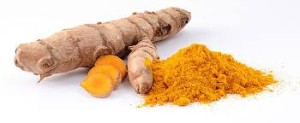Not that it really matters, but, for the record!, I’ve never smoked anything – cigarettes or marijuana or anything else for that matter. So I wasn’t that interested in or paying much attention to medical marijuana…until August of 2013, when I watched Dr. Sanjay Gupta’s CNN “Weed” documentary on the use of medical marijuana. Cannabis suddenly became an interesting blip on my radar.
I mean, how could you NOT be affected by Charlotte’s story, for example? In “Weed,” Charlotte is the little girl who used to have 1200 seizures a month. After her parents began giving her medical marijuana, that number went down to 2 or 3 a month. Unbelievable, simply unbelievable. For those interested, here is a good CNN article about Dr. Gupta’s change of heart: http://goo.gl/lYjlJK
A blog reader who lives in Malaysia and was diagnosed with multiple myeloma more than ten years ago, at the age of 36, wrote to me in September 2014 about her use of hemp oil and how much it has helped her overcome her fatigue and bone pain. In her message, she reported feeling more relaxed and energetic thanks to the hemp oil.
She hasn’t been the only one to have gotten in touch with me. And so, two years (!) after watching “Weed,” I have finally decided to finish editing the post I began writing on this topic a rather long time ago. Let’s begin…
Last year I read a very interesting but complicated ITALIAN study on myeloma and cannabidiol, which is one of the active components of cannabis, the plant from which marijuana is made. (Note: CBD will not get you “high.”) You can find the abstract here: http://goo.gl/gSo7GD.
The full study, which I managed to get my hands on about a year ago, is quite complex and took me some time to decipher. The good news is that the full study is now available for FREE online, so you can download/read the entire shebang here: http://goo.gl/8r6Fj2. This makes my task much easier…Since the study can now be read for free, I can, er, freely discuss it without fear of breaking any copyright laws.
But for today I don’t want to go into too many details. I want to concentrate only on the abstract, which states that cannabidiol (CBD), both in combination with bortezomib (BORT) but also by itself, “strongly inhibited growth, arrested cell cycle progression and induced” the death of myeloma cells.” Wonderful, no? I mean, cannabidiol killed myeloma cells even when tested on its own, without the bortezomib…
This group of Italian researchers also discovered that cannobidiol “may help sidestep the problem of patients developing resistance to bortezomib.” So, more fantastic news.
Conclusion: cannabidiol “seems to help” proteasome inhibitors such as bortezomib in the treatment of myeloma.
Interesting aside. There are currently four clinical “Graft Versus Host Disease” (GVHD) trials testing cannabidiol. The patients in these trials have undergone an allogeneic hematopoietic cell transplantation (using the stem cells from a healthy donor, in a nutshell). The idea is to see if GVHD can be prevented and/or treated with CBD. I should add that only one trial is currently recruiting patients. If interested, all you need to do is go to clinicaltrials.gov and type “cannabidiol AND allogeneic” in the search box. No, apart from the GVHD trials, there are none testing CBD on myeloma patients. Not yet. But I bet it will happen at some point…It SHOULD happen…
Okay, at this point you’re probably wondering why it took me so bloody long to write such a brief, simple post. Well, if I had stopped at the abstract, you’d be absolutely right. But I didn’t. I wanted to understand what was going on, and why this ion channel process is so important in myeloma.
And so I studied how ion channels work, what the TRVP family is, and so on. It took me a while to figure it all out and put it in easy-to-understand language. When I read studies such as this one, sometimes I get really frustrated and give up for a while…or even for a long time…or…forever! 😉 This is not my field of expertise, after all (my Ph.D. is in linguistics, nothing to do with science…). Besides, hey, I do have a normal, busy life, and, to be honest, if I have some spare time I’d rather go play cards with my girlfriends or go out to dinner with Stefano…
That said, after TWO years, I’m finally close to finishing my more technical post on this topic…
So…stay tuned! I’m sure you can’t wait to read about all this stuff, eh? 😉
 What I’d like to see next would be a study testing these three activities on a bunch of myeloma patients at various stages. Now wouldn’t THAT be amazingly interesting? 🙂 In the meantime, while I’m waiting for that study to take place (hah!), I’ll go for a walk in the park while listening to Mozart on my iPod, on my way to the Uffizi Gallery to check out Botticelli’s beautiful paintings (I love Botticelli!).
What I’d like to see next would be a study testing these three activities on a bunch of myeloma patients at various stages. Now wouldn’t THAT be amazingly interesting? 🙂 In the meantime, while I’m waiting for that study to take place (hah!), I’ll go for a walk in the park while listening to Mozart on my iPod, on my way to the Uffizi Gallery to check out Botticelli’s beautiful paintings (I love Botticelli!).